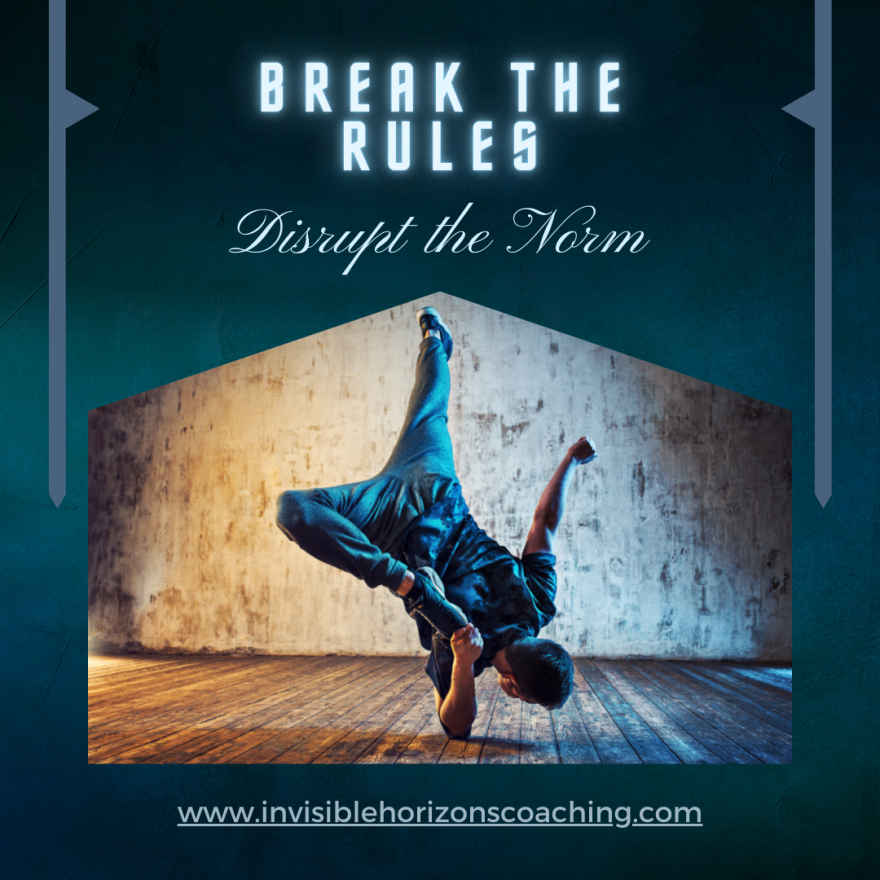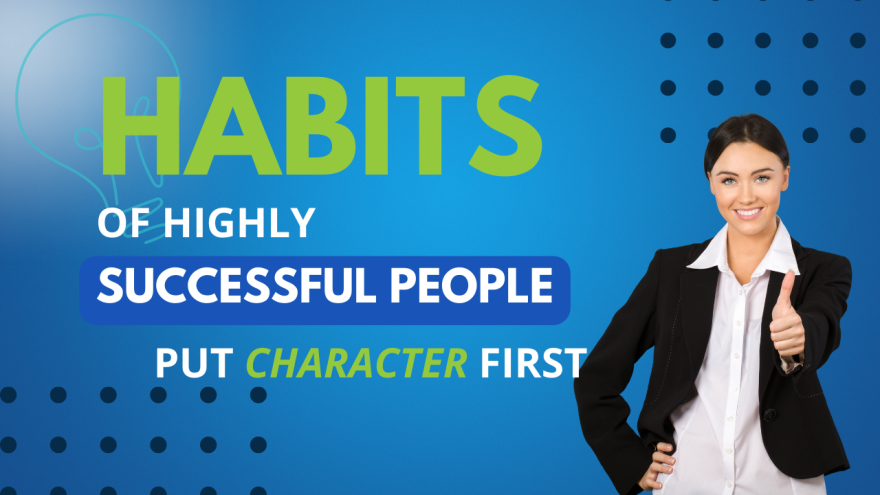|

I’m what’s known as a disruptor. While there are some who might disagree with me, I don’t believe being a disruptor is always a negative thing. My disruptor label comes from the fact that I like to ask “why” a lot and stretch others’ thinking with curious questions. Honestly, I just like to know if there are different and better ways to do things.
A few great disrupting questions are “So what?” and “Why not?” In my experience, you need to know your audience when asking these types of questions, and there are other ways of asking the same thing, but, whatever words you use, “so what” and “why not” help people see, therefore think, differently.
Although I was the global human resources executive for a large company, and many believed I was supposed to be the “rule follower”, I was often the one pushing against the rule book and questioning our policies and procedures.
What mattered to me more than rules were the organization’s values and the principles on which we stood. And, most importantly, how our employees’ behaviors reflected these values and principles. In essence, it came down to how everyone treated each other… the bottom line is character.
Because character matters. Everyone’s unique character drives their actions. Our core moral code and personal, closely held principles are seen through what we do, what we say, and how we act… especially when “no one is looking”.
A very dear colleague of mine once said of risk: “if it doesn’t kill or maim someone, then why not try it?”
How does this fit into business? In one of my former workplaces, when an employee “broke a rule”, the managers’ first reaction was to discipline. But my first response was to ask, “Why did they do that, and what was the implication of their action… i.e., who or what did they hurt?”

Asking these questions helped us to refine our rules and policies – often for the benefit of the whole organization – but also to ensure that we put character first in what we believed.
Culture is driven by the allowed behaviors and actions of your staff, typically driven by the example from the executive leadership team.
If your allowed behaviors and actions (i.e., rules) are misaligned with your company’s mission, vision, and values (MVV), your culture is also misaligned. And that will be reflected in the attitudes, productivity, and results of your team.
What can you do?
-
Compare your MVV to the tolerated behaviors within and throughout the organization. If people are happy, engaged, and there is an overall sense of camaraderie and ownership, congratulations. You’re in the minority. If there is discontent, there may be something much deeper causing the chasm, and it typically involves core beliefs, principles, and values.
-
Consider the last time your Employee Handbook, and all relating policies were reviewed. If it’s been over 18 months, a review is in order. Consider decreasing the rules to increase the trust within the ranks. Ownership drives results significantly more than being boxed in by inflexible rules (i.e., red tape and bureaucracy).
-
Consider the example your executive team is setting. Employees are always looking at and listening to the management team; if you expect one thing but tolerate another, you’ll get what you tolerate. Be clear, be concise, be supportive. And be the example.
-
Ask questions. Asking whether a rule, policy, or procedure makes sense is not a personal affront to the author. Asking questions, challenging the status quo, and considering the future impact of change can be a driver of great success.
As always, this process is not a once-and-done option. Many organizations, despite their highly qualified and experienced leaders, are unable to objectively look at and consider different options. Because it feels personal. And asking these tough questions can feel disrespectful and painful.
I’d like to challenge you to put principles over policies and personal character over crowd-think. You don’t have to go it alone. Talk with an expert who can align your MVV with the behaviors, habits, and principles that matter most. Let’s chat.
Want to build the right culture with the right people? You can start by looking at your employee base, how you recruit, hire, onboard, and retain: click here to hire intentionally (click the “start for free” icon to get started).
Employees already rock it and you’re ready to take your team to the next level? Click here to build (and grow) your team intentionally.
P.S. Book a Complimentary Strategy Session so we can get you moving in the right direction; click on my Complimentary Strategy Session calendar link here and let’s book a time together so you can get started today!
P.P. S. With over three decades of professional experience in corporate operations and executive human resources, I am a proven results-driven leader. My expertise includes strategy, change management, talent management and organizational development, employee relations, and executive and leadership coaching. I am a highly effective communicator and team leader with demonstrated ability to build long-term relationships across internal and external customer environments built with integrity, confidence, authenticity, and trust.
|